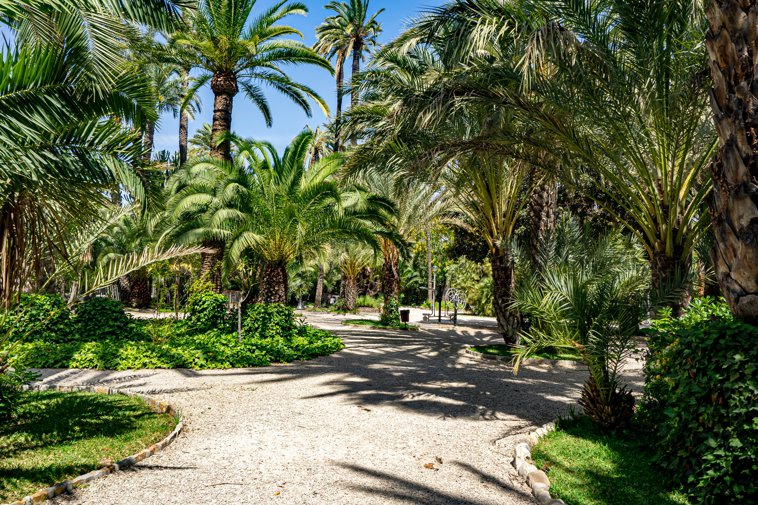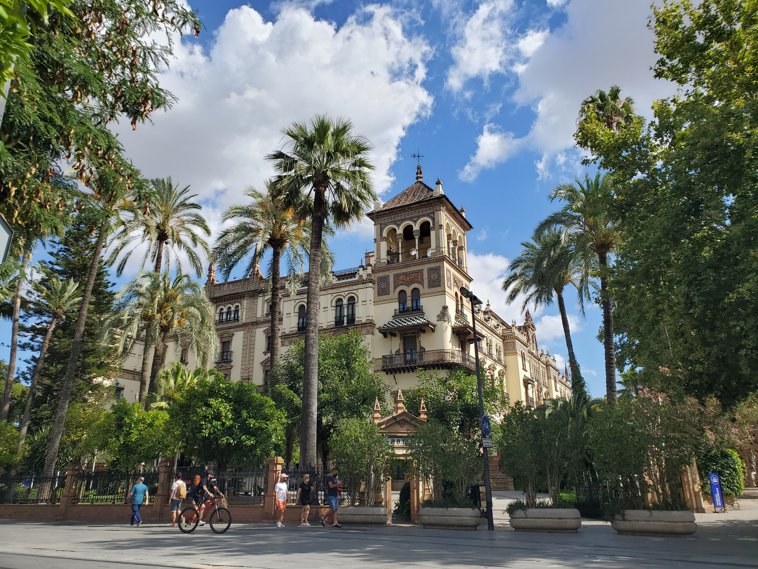UNESCO World Heritage Sites: Southern Spain
Spain is home to an impressive forty-nine UNESCO World Heritage Sites. In this article, we’ll talk about the UNESCO World Heritage Sites located in southern Spain.
Questions This Article Answers
What are the UNESCO World Heritage Sites in southern Spain?
What are the most famous sites in Sevilla?
What to see in Andalucía?
Let’s take a look at the UNESCO World Heritage Sites located in southern Spain!
World Heritage Sites in Alicante
Palmeral of Elche
 Elche, located near the coast of Alicanteis home to a unique palmeral(grove of date palms). There is evidence that date palms have been cultivated in Elche since the 5th century B.C.! It is estimated that there are around 45,000 date palms, covering over 340 acres.
Elche, located near the coast of Alicanteis home to a unique palmeral(grove of date palms). There is evidence that date palms have been cultivated in Elche since the 5th century B.C.! It is estimated that there are around 45,000 date palms, covering over 340 acres.
World Heritage Sites in Andalucía
Renaissance Monumental Ensembles of Úbeda and Baeza
Úbedaand Baeza, located just over five miles apart, both contain important pieces of civil and religious architecture.
Alhambra, Generalife and Albayzín, Granada
Granadawas once a major hub for the Moors in Spain. This is reflected in the Alhambrafortress and palace, Generalifegardens, and Albayzíndistrict.
Historic Center of Córdoba
Córdoba(Cordoba) was founded by the Romans in the 2nd century B.C. and became extremely important during the period of Moorish rule of the Iberian Peninsula. Throughout history, the city has been home to Roman, Visigoth, Islamic, Judaic, and Christian peoples. The Great Mosque of Cordoba was one of the biggest in the world!
Caliphate City of Medina Azahara
Medina Azahara, built in the 10th century, was once the seat of the Caliphate of Cordoba. Its remains were discovered in the early 20th century and are very well-preserved. Only a small part of the caliphate city has been excavated. The ruins give us a spectacular glimpse into what life was like during the Umayyad dynasty.
Cathedral, Alcázar and Archivo de Indias in Sevilla
 Sevilla(Seville) is a well-known and much-loved spot for tourists. Three sites in Sevilla have been declared World Heritage Sites, the cathedral, Alcázar, and Archivo de Indias(Archive of the Indies). The cathedral is the largest Gothic building in Europe, and houses the tomb of Christopher Columbus. The Alcázar has served as a royal residence for centuries. Finally, as its name indicates, the Archivo de Indias contains many documents related to the New World.
Sevilla(Seville) is a well-known and much-loved spot for tourists. Three sites in Sevilla have been declared World Heritage Sites, the cathedral, Alcázar, and Archivo de Indias(Archive of the Indies). The cathedral is the largest Gothic building in Europe, and houses the tomb of Christopher Columbus. The Alcázar has served as a royal residence for centuries. Finally, as its name indicates, the Archivo de Indias contains many documents related to the New World.
Doñana National Park
DoñanaNational Park is located at the estuary of the Guadalquivir River. It contains dunes, marshland, lagoons, maquis, and scrub woodland. It’s also notable for its wildlife. It is home to multiple protected bird species and is an important wintering site for many birds.
Doñana in Danger
Doñana National Park is in danger of losing water due to illegal wells in the area. These wells are used to irrigate fruit crops in surrounding fields. The European Court of Justice ruled that Spain has not protected Doñana from illegal water extraction. In 2022 and 2023, the lagoon dried up! In spring 2023, a German consumer campaign called for a boycott of Spanish strawberries grown near Doñana.
Antequera Dolmens Site
A dolmen is a prehistoric monument that is thought to be a tomb. The dolmens in Antequeraare unique because of their size and the insight they give us into the prehistoric society of the Neolithic and Bronze Age.
Looking for more travel-related articles? Be sure to check these out!











